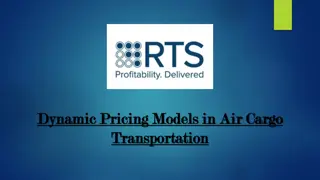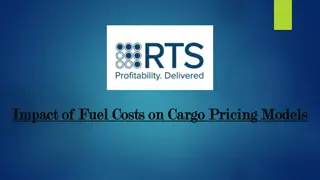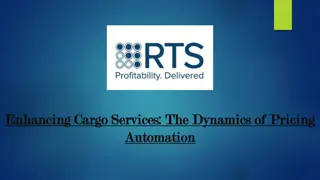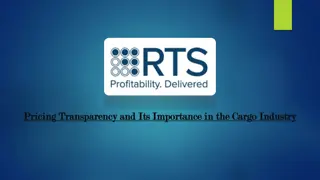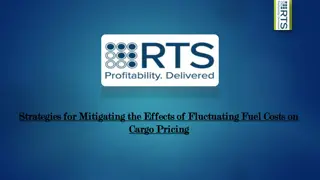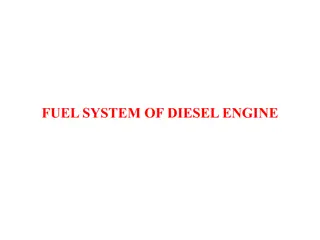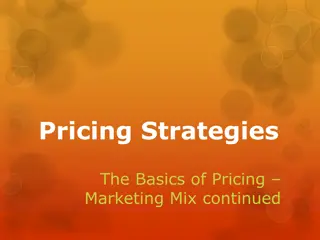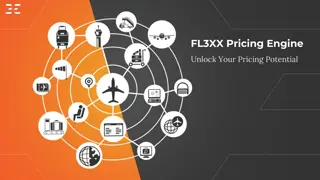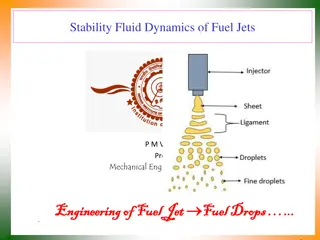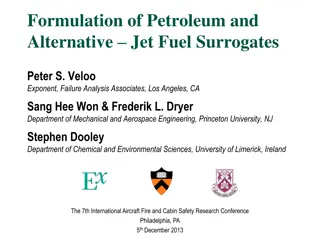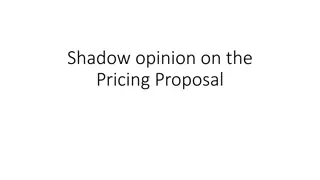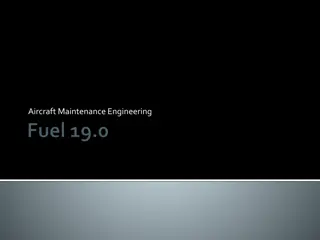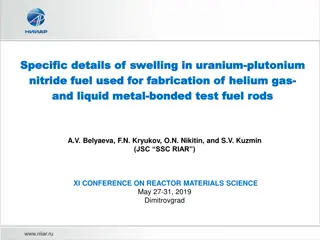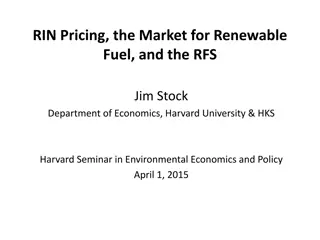Fuel Pricing Mechanisms and Regulation Overview
Explore the various fuel pricing options and mechanisms available, including a discussion on alternatives for fuel pricing regulation. The objectives of fuel price regulation, classifications of fuel pricing in the Pacific Islands, and options such as regulating fuel price and tendering national fuel supply are discussed in detail. Learn about the importance of transparency, accountability, and consumer protection in the fuel industry.
Download Presentation

Please find below an Image/Link to download the presentation.
The content on the website is provided AS IS for your information and personal use only. It may not be sold, licensed, or shared on other websites without obtaining consent from the author. Download presentation by click this link. If you encounter any issues during the download, it is possible that the publisher has removed the file from their server.
E N D
Presentation Transcript
Overview of available fuel pricing options, mechanisms and discussion on alternatives GEOFFREY DAN HOU UA
1. Objectives of Fuel Price Regulation Is how as a regulator, we can improve transparency and accountability to the public and industry in setting of price and profit caps, a. How to increase incentive mechanism for investment, b. Improve the effectiveness of petroleum distribution to remote and rural areas, c. Investigate ways of addressing some of the traditional issues that ensure cost effective / rate of return drives do not inhibit necessary investment or performance improvements, d. For most, it is for consumer protection against some illegal business practises. e.
2. Fuel Pricing in the Pacific Islands can be classified in four categories: DESCRIPTIONS EXAMPLES Prices are regulated on pre-determined criteria and or formula and often at regular interval (monthly/quarterly/ annually) Cook Islands, Fiji, Niue, Papua New Guinea, Solomon Islands, Tonga and Tuvalu. Price Regulation Competitive tendering of fuel market, but the fuel import and storage terminals are to be owned or controlled by national interests. American Samoa, Samoa, FSM, Kiribati Tender national fuel supply and regulate Unsystematic price changes over long intervals or constant prices over longer periods Nauru, Ad hoc Regulations No Regulations Regulation is limited to the level of taxes and framework (e.g. fuel quality) Palau, Marshall Islands, Vanuatu, Australia and New Zealand Source: Categories adopted from GIZ Report -The International Fuel Prices 2010/2011
i. Option 1: Regulate Fuel Price a. Regulating fuel prices in a Pacific Islands context is about reaching agreement with fuel suppliers. b. A fair pricing formula that will periodically set the fuel prices at a fair level for both Consumers and the Suppliers c. For the Pacific region, we have the Fuel Pricing Template which was developed by SPC d. Therefore, FPTs are important and need cooperation between the regulator and Oil Suppliers. e. The theory is that FPTs take into account the actual costs of the fuel supply chain, recognising that fuel suppliers need to recover those costs and also allow them to make a reasonable return on their investments f. One of the limitations of the FPT is it relies on historic operating costs (typically the previous year s actual values)
ii: Option 2: Tendering National Fuel Supply a. Periodic Competitive tendering to supply fuel b. Pre-requisite for achieving competitive national tendering are; That fuel import and storage terminals are to be owned or controlled by national interests Suppliers must have qualified and skilled manpower for technical support and service supply Tendering companies that propose to supply fuel must be pre-qualified (proven track record in the petroleum industry c. Advantages are; It can achieve lowest fuel prices which are better for consumers, Consistent fuel supplies, New suppliers into the market didn t need huge investment, Legal and regulatory requirements are very high
Option 2: Tendering National Fuel Supply conti. d. Disadvantages of Tendering Option; Tender period is short, typically it is 3 5 years Tendering companies that propose to supply fuel must be pre-qualified (proven track record in the petroleum industry) iii. Option 3: Ad hoc Regulations a. Unsystematic price changes over long intervals or constant prices over longer periods
iv. Option 4: Non regulated fuel markets a. In some developed economies, they chose to de-regulate fuel prices on the basis; There are some independently owned fuel import terminals Low barrier to entry for potential new fuel suppliers b. Advantages are; In bigger markets, it is expected that adequate competitive pressure to drive fuel prices down Regulatory systems are in place to stop predator pricing (to drive out small competitors) or price collusion between suppliers c. Disadvantages are; In smaller PIC markets which have limited options for entry of potential suppliers, this can lead to high fuel prices
3. Instruments used in current Price Control Methodology to manage Price changes Instrument 1 a. A monthly restatement of product prices. b. Instrument 2 An annual review of Suppliers audited accounts and submitted information. c. Instrument 3 A triennial review assessing the entire regulatory arrangements and its three year performance against the intent of the Act, Government policies, consumer protection, and the commercial business environment. d. Instrument 4 An ad hoc review of various cost and profit elements including percentage mark-up for retail and wholesale margins, duties, tariffs and distribution costs.
4. General Pricing Philosophy Current Fuel Price Template i. The current template uses a standard petroleum price build up that reflects the actual cost of buying product on the International market and various costs in delivering to any PICs. ii. Timing of Price Restatement or Changes Suppliers and regulators must agree on the timing. Some will agree to review and change fuel prices on quarterly or on monthly basis. For example, if the timing is monthly, Suppliers must submit their monthly submissions or update 4 to 5 working days before the date for new prices to be released.
5. The price of fuel is made up of five main costs areas: a. Purchase of the fuel and transport to any PIC, b. Receiving costs in PIC (aka Harbour cost), c. Government Taxes and Charges d. Operating costs, e. Return on Investment and Inventory held
A key component of the Price Control Framework is to ensure transfer pricing opportunities are minimised, commodities movement are verified, and rate of returns achieved by market powers truly represent the competitive market place. THANK YOU



